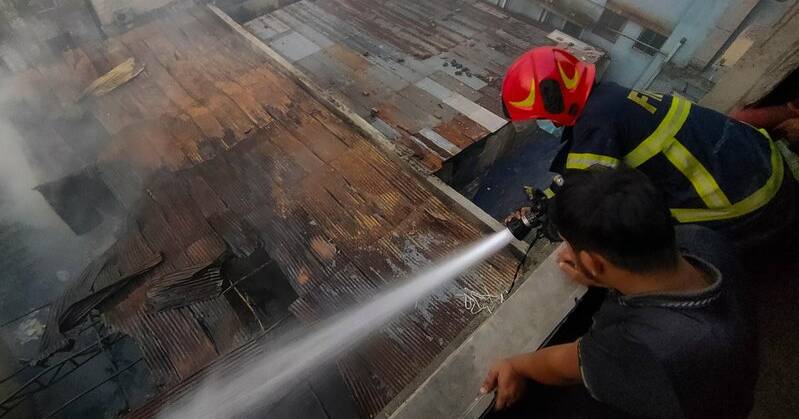
A devastating fire at a garment factory in the Mirpur area of Dhaka, Bangladesh, has claimed at least 16 lives, with officials warning that the death toll may continue to rise. The fire erupted on the third floor of the four-storey factory and spread to an adjacent chemical warehouse, which contained hazardous materials, including bleaching powder and hydrogen peroxide.
Fire service director Tajul Islam Chowdhury confirmed that the victims were found on the second and third floors of the factory. Eyewitness accounts suggest that the blaze started on the third floor, leading to a catastrophic chain of events. “The chemical explosion caused a flashover that released toxic gas, leaving many unconscious and trapping them inside,” Chowdhury stated, adding that workers were unable to escape either upward or downward due to the factory’s locked grilled doors and inadequate safety measures.
Firefighters battled the flames for nearly three hours before managing to control the fire at the factory, although the situation at the chemical warehouse remained critical. Grieving relatives gathered near the site, desperately searching for their loved ones. One father, seeking his daughter Farzana Akhter, lamented, “When I heard about the fire, I came running. But I still haven’t found her… I just want my daughter back.”
Investigation and Safety Concerns
Chowdhury noted that the owners of the factory had yet to be identified, with police and army personnel currently attempting to locate them. Alarmingly, neither the garment factory nor the chemical warehouse possessed the necessary approvals or fire safety plans. Such neglect has been a recurring issue in Bangladesh, where poor fire and building safety standards have led to numerous tragedies in the garment sector, a vital industry employing around four million people and contributing over 10 percent to the nation’s GDP.
In light of this tragedy, interim government head Muhammad Yunus expressed profound sorrow in a condolence message and urged authorities to undertake a thorough investigation while providing support to the victims and their families. The grim reality is that Bangladesh has seen similar disasters in the past, such as the Tazreen Fashions fire in 2012, which resulted in 112 deaths, and the collapse of the Rana Plaza building the following year, claiming 1,135 lives and igniting global outrage over the human cost of cheap clothing.
As the investigation unfolds, there is a pressing need for improved safety regulations in the garment industry to prevent such tragedies from recurring. The loss of life in this latest incident underscores the urgent call for reform and accountability in a sector that has faced intense scrutiny for its safety practices.






